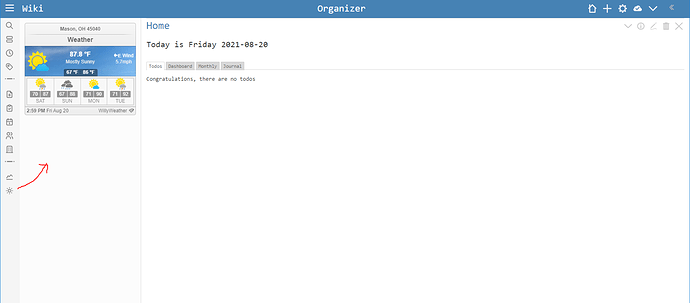I feel like some of you might hate this, but just in case there are those that use their TiddlyWiki as a personal organizer and like to integrate other information, I thought I’d share.
Outside of TiddlyWiki, I’ve known the term “widget” to be a self-contained bit of a website that you can embed inside your site. Well since TW is essentially a website, you can use these too. Couple examples that I use in my own every day:
Stock Prices - https://widgets.tc2000.com
I track my company’s stock against the market and it’s competitors. I setup the widget how I want it at the site above and then in a tiddler just use the code provided by the site (changed my numbers to #s):
<iframe width="276" noresize="noresize" scrolling="no" height="150" frameborder="0" src="https://widgets.tc2000.com/WidgetServer.ashx?id=######"></iframe>
Weather - Create a Widget - WillyWeather
Similarly you can create one at the above (not sure their world-wide coverage, I’m in US):
<iframe style="display: block;" src="https://cdnres.willyweather.com/widget/loadView.html?id=######" width="276" height="228" frameborder="0" scrolling="no"></iframe>
This setup works particularly well with my custom layout in which I use sidebar-panes so it looks like this:


 in that some many sites won’t allow themselves to be embedded.
in that some many sites won’t allow themselves to be embedded.